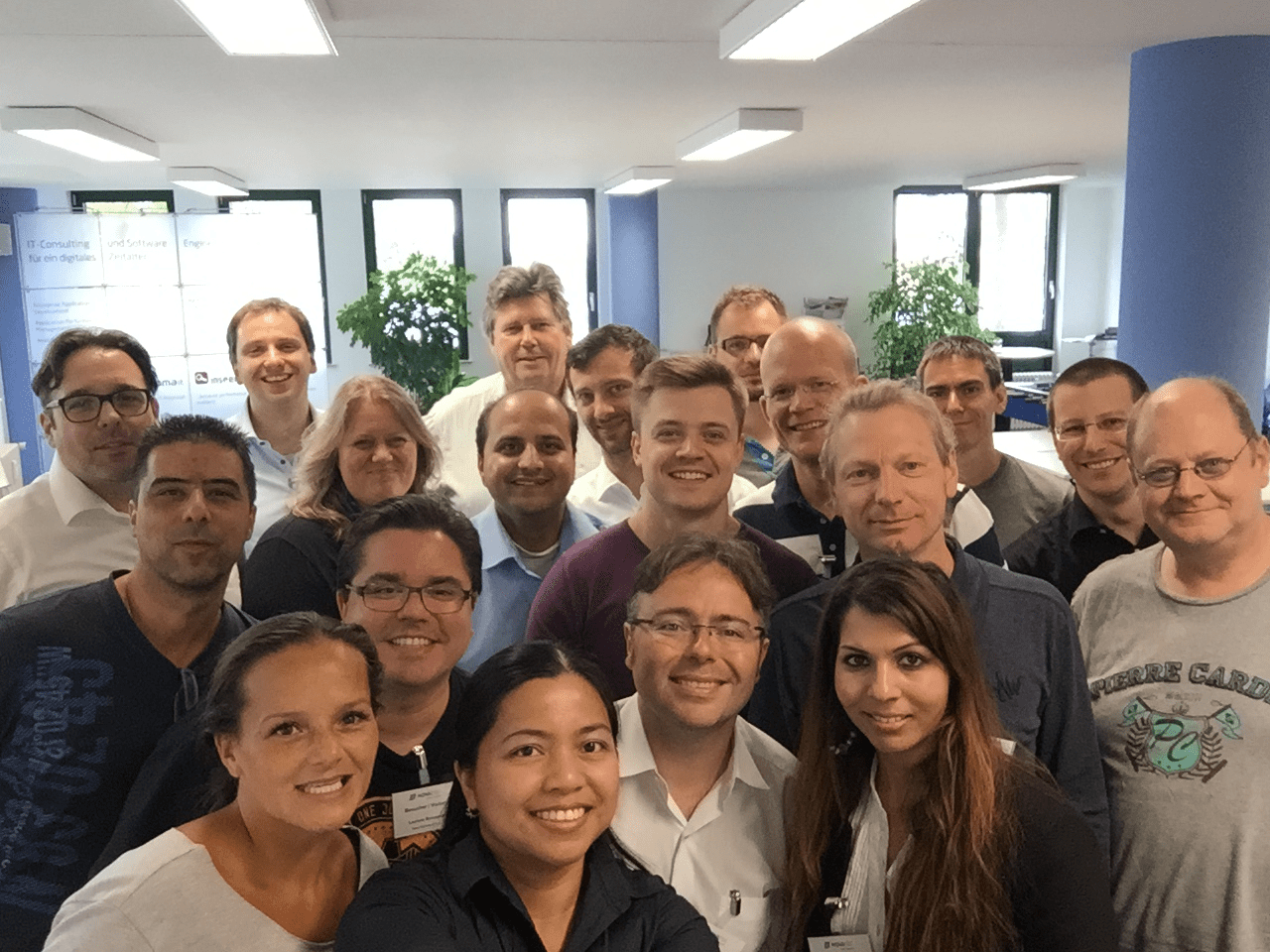by Shirley Santiago –
“Shirley, anything worth having is worth working hard for.”, that was how my friend Steve from Scrum.org1 put it as I pursued my journey with Scrum.
MY JOURNEY WITH SCRUM
My journey started a few years ago when a friend asked me to provide Scrum training to their organization. I had substantial Scrum experience from my previous projects, and armed with formal Scrum Master training, I immediately proposed a training plan and developed training material. For some reason, the engagement did not materialize. Undeterred, I went ahead and organized a group of consultants within our organization who were interested in learning Scrum. They were going to be my “guinea pigs”, so to speak.
After that initial Scrum training, other colleagues became curious. We were not just saving hundreds of dollars from not relying on external trainings, but, more importantly, we were gaining a lot of knowledge from sharing our experiences on different projects. This paved the way to building stronger Scrum teams, while also providing us with the opportunity to get to know each other and align our ways of working. The Leadership team suggested teaching the course from 6PM to 9PM so that more consultants could attend. Since we usually work on either a day shift or a night shift, this was the best window to hold our training sessions.
At first, I had hoped to get 20 people trained and certified in Scrum. I thought initially that this should be enough to jumpstart our organization into Scrum adoption. I even thought that 20 was going to be a difficult feat. A stretch goal. What I really didn’t expect was that this was going to be an evolution.
PAY IT FORWARD CULTURE
Through word of mouth, more of our consultants asked to take the training. I ended up doing 9 training sessions in the first 6 months, including a special session for the management team. Now, I did have a day job, so I could not fathom being able to continue providing Scrum training. But things changed within the organization. After people were trained and certified, they began to pay it forward by coaching the next group of trainees. Management started noticing the benefits of this Pay-It-Forward initiative and eventually gave their full support and even provided sponsorships on the certification exams. This continued until it became the norm.
This same culture also helped our new Big Data program to the point where the organization obtained a Platinum partnership with one of the biggest Big Data companies in the world.
Every successful certification was an important milestone that we celebrated during our Townhall meetings.
MY JOURNEY AS A TRAINER
I can still clearly remember how the leadership team reacted when I said that I needed to go to Stuttgart, Germany for a Train-the-Trainer event with Scrum.org1. I had decided to become a Professional Scrum Trainer with the organization, and this was one of their many requirements. The first reaction of the group was a plain “Huh?!!” which to me was neither a rejection nor an approval.
I requested 5-day leave and asked my immediate boss to allow me to travel to Stuttgart. I was determined to bring the Scrum Master training to the Philippines. I wanted my organization to have formal and professional Scrum training courses. I wanted the best. I wanted these courses to be endorsed by Ken Schwaber, one of the co-creators of Scrum. Probably recognizing my persistence, I received formal travel approval and off I went to Germany.
During the first day of training, I realized that I was the only one from the other side of the world. My classmates were from Germany, Spain, UK, Russia, Poland and The Netherlands. I wasn’t prepared for the culture shock but once I adjusted, I started to enjoy learning from the experiences of my trainer classmates; how they adopted Scrum and how they planned to use it to serve in their communities.
From that trip, I also got to know Gunther Verheyen2 who was our trainer at that time. (Gunther, by the way, is the author of the popular book Scrum – A Pocket Guide3.) He eventually became one of my coaches and a mentor in my journey with Scrum.

(3rd Row L-R: Mark R., Wolfgang, Dick, Pawel; 2nd Row L-R: George, Sabina, Hemant, Cornelius, Mark K., Ludwig, Marco, Dominik; 1st Row L-R: Evelien, Laurens, myself, Alex, Sukhi, Gunther, Alasdair)
FAMILY, WORK, BIG DATA, SCHOOL AND SCRUM
After my Stuttgart trip, I took some time off and began to obtain more Scrum Certifications to improve myself as a trainer. I was also finishing graduate school at the same time and juggling my family responsibilities and my normal day job as an architect.
My coach from Canada, Jill Graves4, had not heard from me in 5 months and she reconnected with me to see where I was at with my Scrum Trainer goals. I guess she felt that it was time for me to get back to my Scrum Trainer journey. That email was quite timely as I was wrapping up my semester and just about to take my graduate school’s Comprehensive Exam.
Over the next 4 months, I took my Comprehensive Exam, did my thesis, had my Scrum.org1 peer review, did a few more Scrum trainings and some Big Data Hadoop trainings. Looking back, I would wonder how all that was even possible but I persisted!
I got a lot of help from my colleagues. They volunteered to conduct the trainings, especially in Hadoop. Needless to say I had a lot of sleepless nights but I was able to cope because of my peers. At the most critical time, we found support from one another.
There was a TED talk5 by Margaret Heffernan entitled “Forget the pecking order at work” wherein she said, “Helpfulness means I don’t have to know everything, I just have to work among people who are good at getting and giving help.”. When I heard this, I had goose bumps.
SCRUM IN THE PHILIPPINES
My entry to Scrum.org1 was a special and unconventional one as some people from the organization would attest. I did not come from a training company. I was from an organization that self-organized to adopt Scrum to help us improve our ways of working. We learned and experienced Scrum through the challenges and successes in our projects. My journey also taught me about a deeper meaning of humility. I welcomed all the feedback I received from my peers and used it to improve myself as a trainer.
Just recently, I received a formal communication from Scrum.org1 officially welcoming me to their community of Professional Scrum Trainers6. It means a lot to our organization and it is a great testament that with teamwork and a culture of helping each other, we can reach further than we can imagine. We will keep doing Professional Scrum and we will pay it forward to our community in the Philippines.
#IdeasRealized
Works Cited
1. Scrum.org https://www.scrum.org/
2. Ullizee-Inc https://guntherverheyen.com/
3. Scrum: A Pocket Guide https://www.amazon.com/Scrum-Pocket-Guide-Practice-Publishing/dp/9087537204
4. Jill Graves https://www.linkedin.com/in/jill-graves-1408b215/?originalSubdomain=ca
5. Forget the pecking order at work www.ted.com/talk/margaret_heffernan_forget_the_pecking_order_at_work
6. Professional Scrum Trainers https://www.scrum.org/find-trainers



